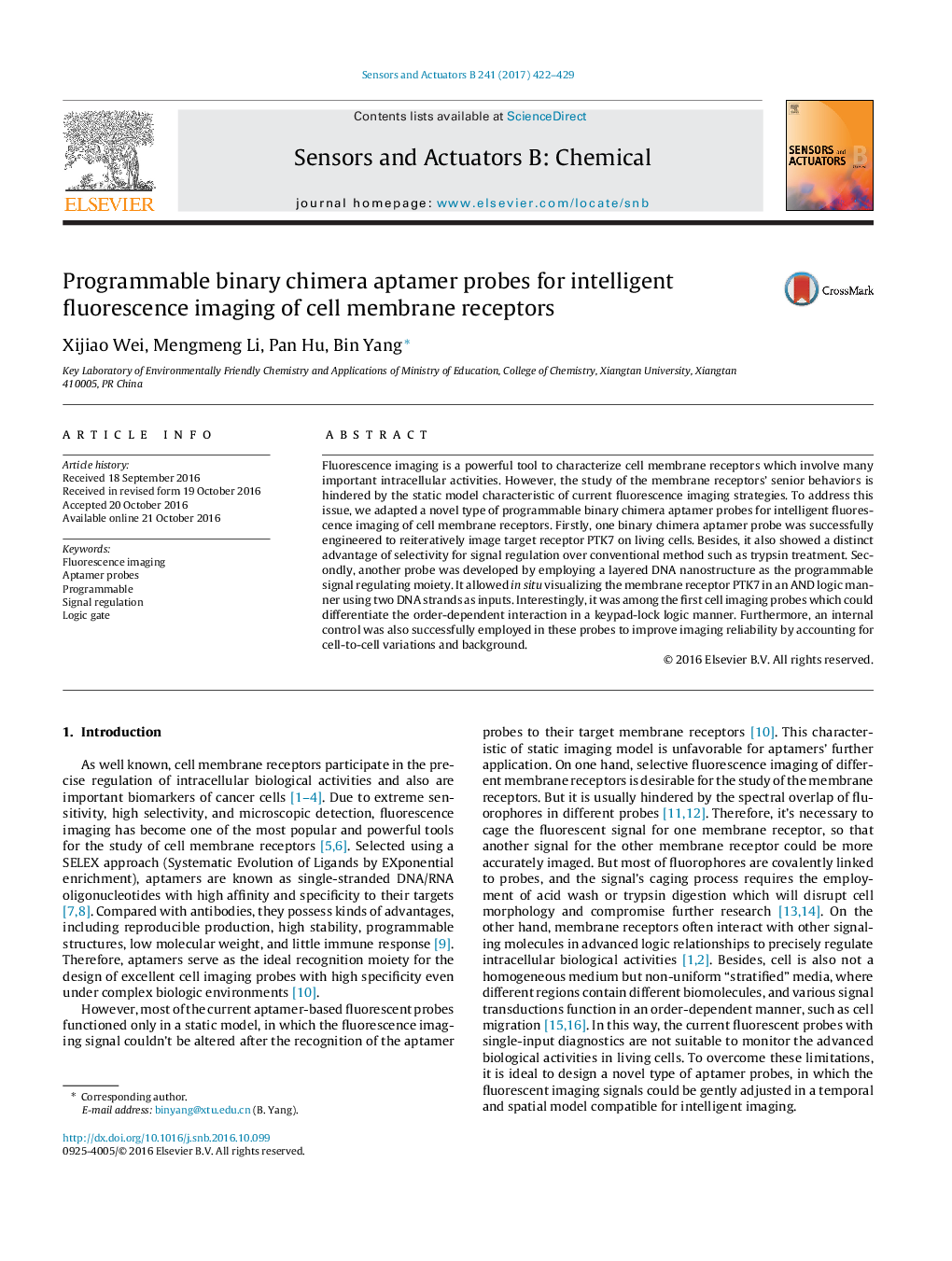| Article ID | Journal | Published Year | Pages | File Type |
|---|---|---|---|---|
| 5010111 | Sensors and Actuators B: Chemical | 2017 | 8 Pages |
â¢A novel type of aptamer probes was developed for intelligent fluorescence imaging.â¢It showed a distinct advantage of selectivity for signal regulation.â¢It was among the first cell imaging probes to differentiate the order-dependent interaction.
Fluorescence imaging is a powerful tool to characterize cell membrane receptors which involve many important intracellular activities. However, the study of the membrane receptors' senior behaviors is hindered by the static model characteristic of current fluorescence imaging strategies. To address this issue, we adapted a novel type of programmable binary chimera aptamer probes for intelligent fluorescence imaging of cell membrane receptors. Firstly, one binary chimera aptamer probe was successfully engineered to reiteratively image target receptor PTK7 on living cells. Besides, it also showed a distinct advantage of selectivity for signal regulation over conventional method such as trypsin treatment. Secondly, another probe was developed by employing a layered DNA nanostructure as the programmable signal regulating moiety. It allowed in situ visualizing the membrane receptor PTK7 in an AND logic manner using two DNA strands as inputs. Interestingly, it was among the first cell imaging probes which could differentiate the order-dependent interaction in a keypad-lock logic manner. Furthermore, an internal control was also successfully employed in these probes to improve imaging reliability by accounting for cell-to-cell variations and background.
Graphical abstractDownload high-res image (99KB)Download full-size image
